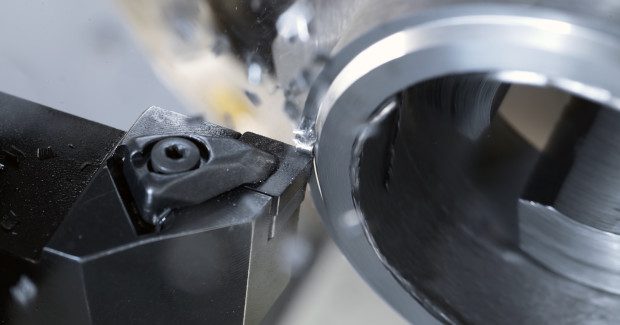2014 Tooling & Workholding Outlook: Race to the Future
Once seemingly insignificant peripherals are becoming the important difference in competing on a large scale as smart hybrid machines marry technologies once found on very different types of tools. Milton Guerry of Schunk examines how this race to the future stimulates concentration on machine accessories to match the machine technology and create a wide range of ‘add on investments’ from automation, to advanced tooling to quick change workholding.
Posted: January 10, 2014
The metalworking and automation industries remain stable and poised for further growth. Even though 2013 was far from disappointing, I am confident that we were all expecting a bit more economic growth.
It seems many of the right factors to support this growth are there, but the gridlock that has become commonplace in our nation’s capital has prevented or slowed the stars from aligning. 2014 holds great promise for continued, if not accelerated, revitalization of manufacturing in the U.S.
The automotive and aerospace sectors will continue to lead the way in the coming years in terms of capital investments and operational expenditures. Just a few short years ago there was talk that U.S. car manufacturing could be lost forever.
Now, all of the major automotive companies are not only generating healthy revenue, they are profitable. With the average age of vehicles in the U.S. being over a decade, investments in U.S. production and tier supply are sound. Further, the automotive companies and suppliers that are not currently manufacturing in the U.S. are looking to build plants and buy machines.
Other industries such as oil and gas, medical and consumer seem to be more guarded. As conditions level around the world and real costs become more transparent, we can expect more manufacturing investment in these areas as well.
The trend towards higher and higher technology is clear. Machine controls are getting smarter, speeds are ever increasing, hybrid machines coming to the market marrying technologies typically found on very different types of tools. This race to the future is exactly the stimulation that U.S. manufacturing needs as we develop and compete worldwide.
Many of the technology adopters are finding their way to concentrating on the machine accessories to match the machine technology. There is a wide range of ‘add on investments’ from automation, to advanced tooling to quick change workholding. These once seemingly insignificant peripherals are becoming the important difference in competing on a large scale.
Much opportunity in the development of products in and around the machine tools will continue to drive heavy investments in product development. Many of these products will concentrate on the machine run time, change over and interaction with other processes. Others will center on more advanced functions, such as sensing and multi-axis motion.
The challenges of machine uptime, setup time reduction or elimination, process balance and systems integration remain very real. The technology we choose to invest in is often cutting edge. This equipment must run and produce so that idle time and marginal productive time is rooted out of the process. We should not lose focus on the simple factors that will support the return on investment.
As a manufacturer, we face the same issues as many of our customers. Investments in our facilities from buildings to machines worldwide will be strengthened in 2014. The investments will not stop there. We will look to get the most of the new investments and our existing capital by looking to the same places we encourage our customers to look. Oftentimes we are able to bring out potentials in existing machines by investing in more advanced technologies for them.
The continuing need for skilled workers is an issue that needs addressing. According to the Bureau of Labor Statistics the median age of a machinist is 45 years old. The only way to face this head on is to take the right proactive steps.
Our company believes that we need to take this into our own hands, so last year we partnered with six other companies to create the North Carolina Apprenticeship Program (NCTAP) for nourishing young talent and growth that will ultimately reap benefits for business.
NCTAP training models companies with trade surpluses, such as Germany and Switzerland. Its concept allows young workers to grow with a company from an early age on, creating an extremely skilled worker through classroom and hands-on training – a classic principle that fostered many American thought leaders like Thomas Edison and Henry Ford. If we all take these steps, we can close the skills gap together.
In an uncertain economy, continued training, research, development, and innovation are the best way to compete successfully in a global marketplace.
















